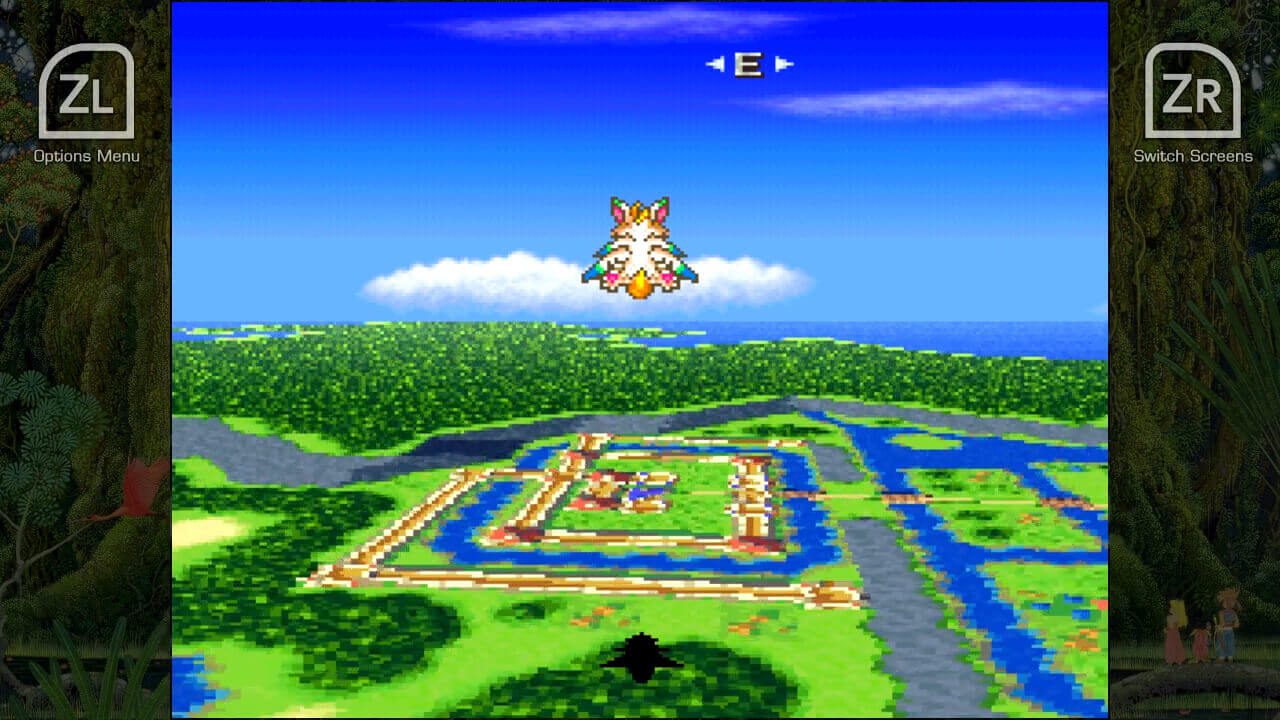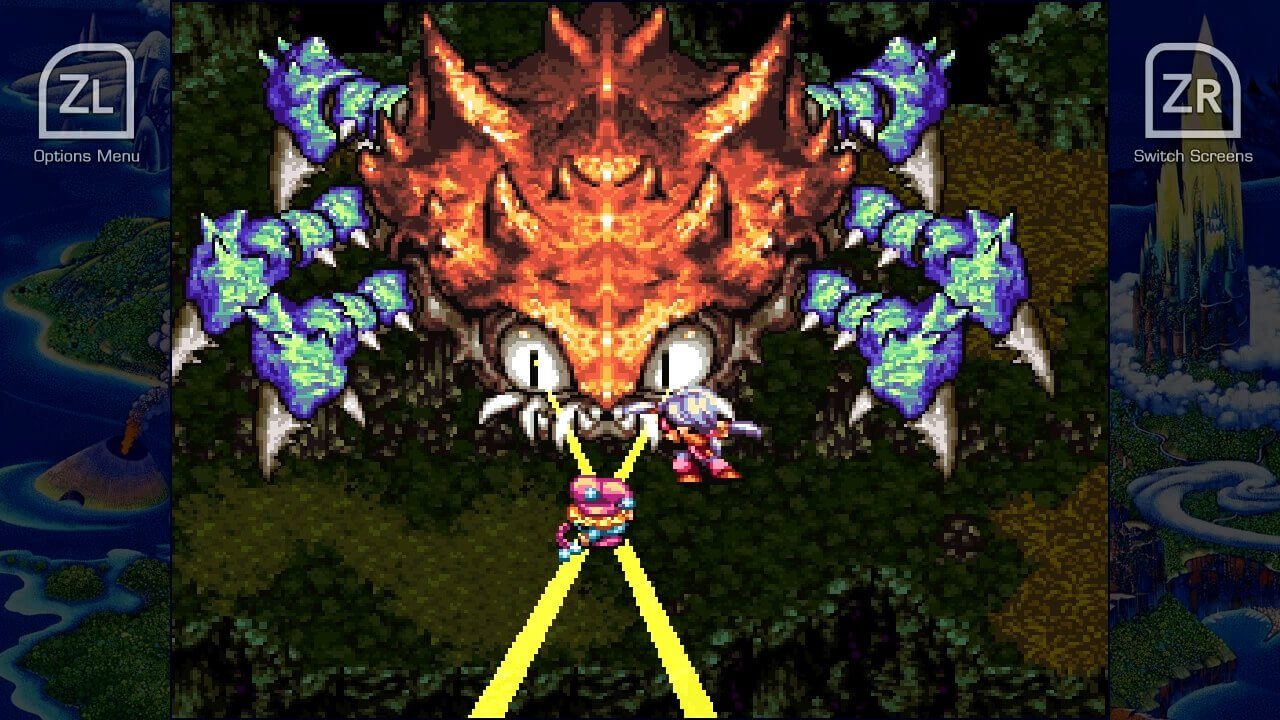The Mana series, known as Seiken Densetsu in Japan, is unique in gaming. Even the way the series started is a tale of gaming history where an attempt to make a game in which the combat happened on the same screen as exploration ended up creating not one but multiple beloved games. The original attempt went on to become the famously good Chrono Trigger, while a new project came in the form of Final Fantasy Adventure for the Game Boy, the first of the Mana series. The next Mana game, Secret of Mana, came out on the Super Nintendo and is often labeled as one of the best RPGs, and even one of the best games, of all time. The more action-based combat, cooperative multiplayer, distinct art style, and banging soundtrack resonated tremendously with players. This is why it is surprising that when the third game came out it never left Japan. Over the years, fans of the series have created fan translations of the game for emulators and it fostered a bit of a cult following. Now, nearly 25 years later, we have an official release of Seiken Densetsu 3 as a part of The Collection of Mana, known now as Trials of Mana. This collection comes in the wake of the remasters of the first two titles and just ahead of the remaster of Trials of Mana. While mostly a review of Trials, I will also be looking at The Collection of Mana as a whole and how well it delivers these classic games.
Each of the three games featured in Collection of Mana comes with multiple language options, have different display options, save states, and the ability to return to the title screen to switch between games. Final Fantasy Adventure, specifically, offers multiple color options to help fans tap into ultimate nostalgia by matching the game to their original experience depending on which version of the Game Boy they had growing up. The other two games appear in brilliant color, and none of the game lose quality when upscaled on the TV versus being displayed on the Switch screen. There is also a music player for each game in the game selection menu allowing one to listen to tracks, which I did do a couple of times just to hear them out of my home theater system.
Something that is noticeably missing from these games is access to any form of the original game manuals. There’s a generic button layout and “how to play” manual used for all three games and a QR code that simply leads to the Collection of Mana’s website which doesn’t offer anything but a splash page of features. This is truly a shame, particularly in the case of Trials of Mana. For all of these games, I would have liked to read through the manual to read about the characters, the world, and other tidbits that a game manual may hold. At least for Final Fantasy Adventure and Secret of Mana I can look up scans of these online, but since there was never an official printed game manual for Trials of Mana in English, any scans are useless. This is frustrating since Nintendo set up an entire library of downloadable game manuals for the Super Nintendo Classic Edition accessible via QR code, which includes Secret of Mana, meaning they have a third of it already done.
These manuals include important information not included in the game and it’s a shame to have to go so far out of my way to get it.
Each of the individual games can be played at any time and similar to Final Fantasy they are stories independent of each other. What they share is a more action-based combat system, a high fantasy setting, and a plot centered around the world power of Mana. Trials of Mana adds the option of character choice, which decides a few different things like the main character, the side characters, and even the villains. Players can mix and match the six characters in any way desired, which does offer up a decent amount of replayability not often found in JRPGs. So while not a game full of choices, the choice made in the beginning does change the course of the story.
Unfortunately, the only way to know about these characters ahead of time, aside from how they look, is a game manual. The game manual includes character descriptions, class, and weapons. Lacking this information, however, I had to choose based on the character sprite. Once a team is decided, the game begins with the character chosen first, launching into their legend. It doesn’t take long to run into the other two characters chosen. Each story is unique, characters have personalities and even accents, and they interact with each other differently. Many scene dialogue is determined by who is in the scene. Seeing how one character interacts with another is one of the big appeals of Trials of Mana and I can’t wait to experience them all. I don’t want to spoil anything but it is fun seeing the characters meet and grow together as they trek around the world in an effort to save it.
One thing that fans of the previous titles may notice is that in Trials of Mana there is no longer an action bar that grows after each hit. This being the biggest indicator in previous games of when to unleash more successful and powerful hits, instead, the bar is replaced with a pose animation that the character will perform when they are ready to attack again. There is now a counter that fills after each successful hit that once full will allow the heroes to perform a powerful Class Strike attack. Later on, this counter grows and opens up even more powerful attack options. Still present is the Mana series signature Ring Menu system. Pulling up this menu shows a ring of items or spells, allowing for quick and seamless transition between options. In Trials of Mana though, items that can be considered more preparatory can be managed in a more traditional menu screen, leaving options more likely to be used in the heat of combat for the Ring Menu system.
Visually, each game looks fantastic both on TV and on the Switch screen. Even Final Fantasy Adventure (Adventure of Mana) being a Game Boy game is fun to look at and goes to show that even with limited resources the developers were able to accomplish a lot with the little gray brick. This is especially fun when combined with the previously mentioned display options to match the various models of display that the Gameboy sported over its lifetime.
Secret of Mana and Trials of Mana are brilliantly colored with some of the best sprite work on the Super Nintendo. Characters emote and react to situations and environments vary across the world with specific design elements and color palettes. The implementation of Mode 7 for traversing the world map, and magic attacks even still today adds scope and depth in a satisfying way. I’d say Secret of Mana and Trials of Mana are some of the best looking games to come from the Super Nintendo and they still seem to inspire people in game design. Excellent visual design aside, there were occasions where an exit from one screen to the next wasn’t clear, but once I knew what to look for it happened far less.
The music and sound design are also top-notch. Across all three games, the music is worth listening to outside of the game. Particularly in Secret of Mana and Trials of Mana extra effort was made to record all new samples from scratch causing these games to sound unlike anything else on the system. These sounds and songs are so distinct that one can immediately tell it’s a Mana game without necessarily being familiar with the soundtrack. It just sounds like a Mana game. Hiroki Kikuta did a phenomenal job composing music that captured the feel of environments, characters, scenes, and moods. There’s a reason that the music player in the main menu is a welcome addition to the Collection of Mana experience.
Collection of Mana brings together three beloved games that deserve the recognition as some of the best games of all time. They dared to take JRPGs in a new direction and did it successfully. The presentation of each game is fantastic, and the addition of the music player is a nice touch. Each game plays flawlessly and they are as enjoyable as they were in their original state. Finally getting an official Western release of Seiken Densetsu 3, or now known as Trials of Mana, is awesome and gives me hope for future western releases never seen outside of Japan. (I’m looking at you Mother 3!) The major drawback of experiencing these games in this way is the complete lack of game manuals; the information they hold is intended to be a part of the experience of the game and it is noticeably missing. It’s unfortunate that in their attempt of preserving these games, they missed one of the vital pieces.
The Mana series is a piece of video game history and this collection is a definitive way to experience the first three titles of this phenomenal series.
More information about Collection of Mana can be found on the official Nintendo listing. A digital Switch copy of the game was provided for the purpose of review.
For more reviews, be sure to check out our take on Remnant: From the Ashes, The Last Remnant Remastered, or Ni No Kuni II: Revenant Kingdom.







